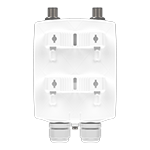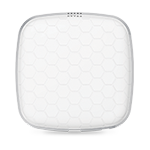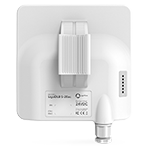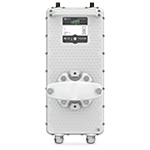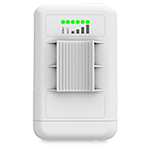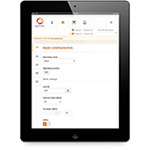- All products
- Access
- Backhaul
- Surveillance
- Industrial applications
- Operators
- Rural connectivity
- Enterprise Wi - Fi
- Hotspot
Best WiFi Access Point Technologies
The demand for wireless technologies has been high for quite some time now and it does not seem to be at all diminishing. Smartphones, tablets, laptops, smart TVs, portable speakers, and many other devices greatly rely on wireless connectivity for maximum functionality and performance.
The wireless access point market provides a multitude of various solutions to different scenarios. Whether it is a home, a home office, a small business or a medium to large enterprise, modern wireless technology solutions can satisfy any need that may arise. However, the trick is to find the best solution.
Every wireless access points comes with its own capabilities, functions, and specifications. However, the question is what are the best Wi-Fi access point technologies of 2017 that everyone should be looking for when browsing Wi-Fi access points? Here is a list of some key attributes to keep an eye out for.
The wireless access point market provides a multitude of various solutions to different scenarios. Whether it is a home, a home office, a small business or a medium to large enterprise, modern wireless technology solutions can satisfy any need that may arise. However, the trick is to find the best solution.
Every wireless access points comes with its own capabilities, functions, and specifications. However, the question is what are the best Wi-Fi access point technologies of 2017 that everyone should be looking for when browsing Wi-Fi access points? Here is a list of some key attributes to keep an eye out for.
MIMO. MIMO, or multiple input, multiple output, is a method of increasing the performance capacity of a Wi-Fi radio signal. This is done by multiplying the number of transmit and receive antennas and taking advantage of multipath propagation. More antennas and more signal paths means more simultaneous links and more throughput.
The 4×4 MIMO technology can be found in the most advanced wireless access points, designed for industrial and large enterprise scenarios. Home wireless access points may not have MIMO capabilities and still deliver up to 300Mbps of throughput, but having 2×2 MIMO makes a great difference in ensuring a more reliable and efficient network.
Quality of Service (QoS). Quality of Service is a data control mechanism that prioritizes certain types of data, such as video and voice. Its purpose is to guarantee a seamless experience when, for instances, streaming a film or interacting with others via a voice call. Wireless access points with QoS support manage data packet delivery more efficiently.
The 4×4 MIMO technology can be found in the most advanced wireless access points, designed for industrial and large enterprise scenarios. Home wireless access points may not have MIMO capabilities and still deliver up to 300Mbps of throughput, but having 2×2 MIMO makes a great difference in ensuring a more reliable and efficient network.
Quality of Service (QoS). Quality of Service is a data control mechanism that prioritizes certain types of data, such as video and voice. Its purpose is to guarantee a seamless experience when, for instances, streaming a film or interacting with others via a voice call. Wireless access points with QoS support manage data packet delivery more efficiently.
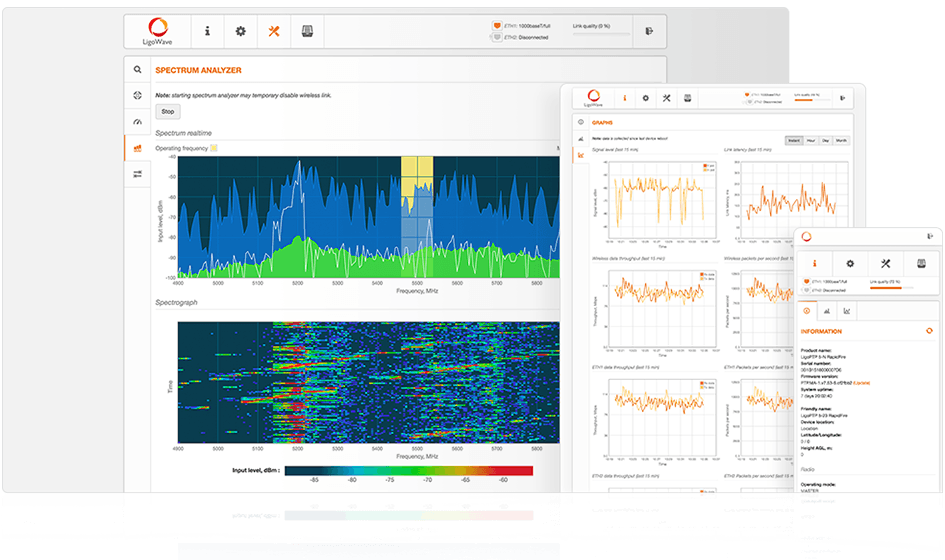
Modulation Schemes. Modulation schemes, such as QAM (quadrature amplitude modulation), are signal transmission techniques, whereby the radio waves are altered to carry specific information to devices equipped with the necessary Wi-Fi antennas capable of interpreting the signals.
Modern wireless access points should support orthogonal frequency-division multiplexing (OFDM), which incorporates quadrature amplitude modulation (256QAM, 64QAM, 16QAM) and phase shift keying (QPSK and BPSK). This allows Wi-Fi access points to deliver data at much greater speeds.
Dual Band Antenna. Dual band antennas are electrical devices that allow signal transmission and reception on two different frequencies concurrently. In the case of wireless access points, the frequencies are 2.4GHz and 5GHz. The 2.4GHz band covers a greater area, while the 5GHz band allows for greater data throughput.
Wireless access points with dual band antennas are very beneficial in heavy-use scenarios because they deliver higher throughput and support a higher number and greater variety of users. Dual band Wi-Fi access points may not be a necessary solution for home consumers, but it can be of use during house parties or large family gatherings.
Wireless Protocol. Wireless application protocols are sets of rules that form a standard for the way Wi-Fi compatible devices are to be used for Internet access. Advancements in wireless protocols allow for higher maximum throughput and enhanced wireless technologies to be utilized (such as MIMO and Dual Band Antennas).
The latest wireless application protocol is 802.11ac, which supports dual band antennas, is backwards compatible with 802.11b/g/n standards, and allows up to 1,750Mbps of aggregate throughput. However, access points supporting 802.11b/g/n are still very functional and comparatively more cost-effective, especially for homes and small businesses.
There are also protocols developed and owned by private companies that manufacture wireless access points and other Wi-Fi products. For example, LigoWave offers the iPoll 3 proprietary protocol, which improves upon multiple 802.11 standards by establishing a token system for data packets, thus eliminating inefficiency and performance lag.
Interface. Ports are physical connectivity sockets for communication, power, and other types of wires. Wireless access points have at least one RJ45 (Ethernet) port, which is dedicated to communication with the switch. However, wireless access points may have more RJ45 ports for establishing a chain network, or even other ports, such as USB (for printers, etc.). Additional ports are a definite advantage, but not a necessity.
However, it is very useful to look for wireless access points with Power over Ethernet (PoE) capabilities. PoE enables wireless access points to receive power over the Ethernet cable, eliminating the need for AC adapters and deployment near electrical sockets. 802.3af and 802.3at (also called PoE+) are the latest available PoE technologies.
Several new Wi-Fi innovations and upgrades are already in the works, but it will still be a while until they are available to the consumer market, let alone affordable to the masses. For the time being, this brief list should be enough to make an informed decision on what makes a home or business wireless access point the best option for any scenario.
The latest wireless application protocol is 802.11ac, which supports dual band antennas, is backwards compatible with 802.11b/g/n standards, and allows up to 1,750Mbps of aggregate throughput. However, access points supporting 802.11b/g/n are still very functional and comparatively more cost-effective, especially for homes and small businesses.
There are also protocols developed and owned by private companies that manufacture wireless access points and other Wi-Fi products. For example, LigoWave offers the iPoll 3 proprietary protocol, which improves upon multiple 802.11 standards by establishing a token system for data packets, thus eliminating inefficiency and performance lag.
Interface. Ports are physical connectivity sockets for communication, power, and other types of wires. Wireless access points have at least one RJ45 (Ethernet) port, which is dedicated to communication with the switch. However, wireless access points may have more RJ45 ports for establishing a chain network, or even other ports, such as USB (for printers, etc.). Additional ports are a definite advantage, but not a necessity.
However, it is very useful to look for wireless access points with Power over Ethernet (PoE) capabilities. PoE enables wireless access points to receive power over the Ethernet cable, eliminating the need for AC adapters and deployment near electrical sockets. 802.3af and 802.3at (also called PoE+) are the latest available PoE technologies.
Several new Wi-Fi innovations and upgrades are already in the works, but it will still be a while until they are available to the consumer market, let alone affordable to the masses. For the time being, this brief list should be enough to make an informed decision on what makes a home or business wireless access point the best option for any scenario.
